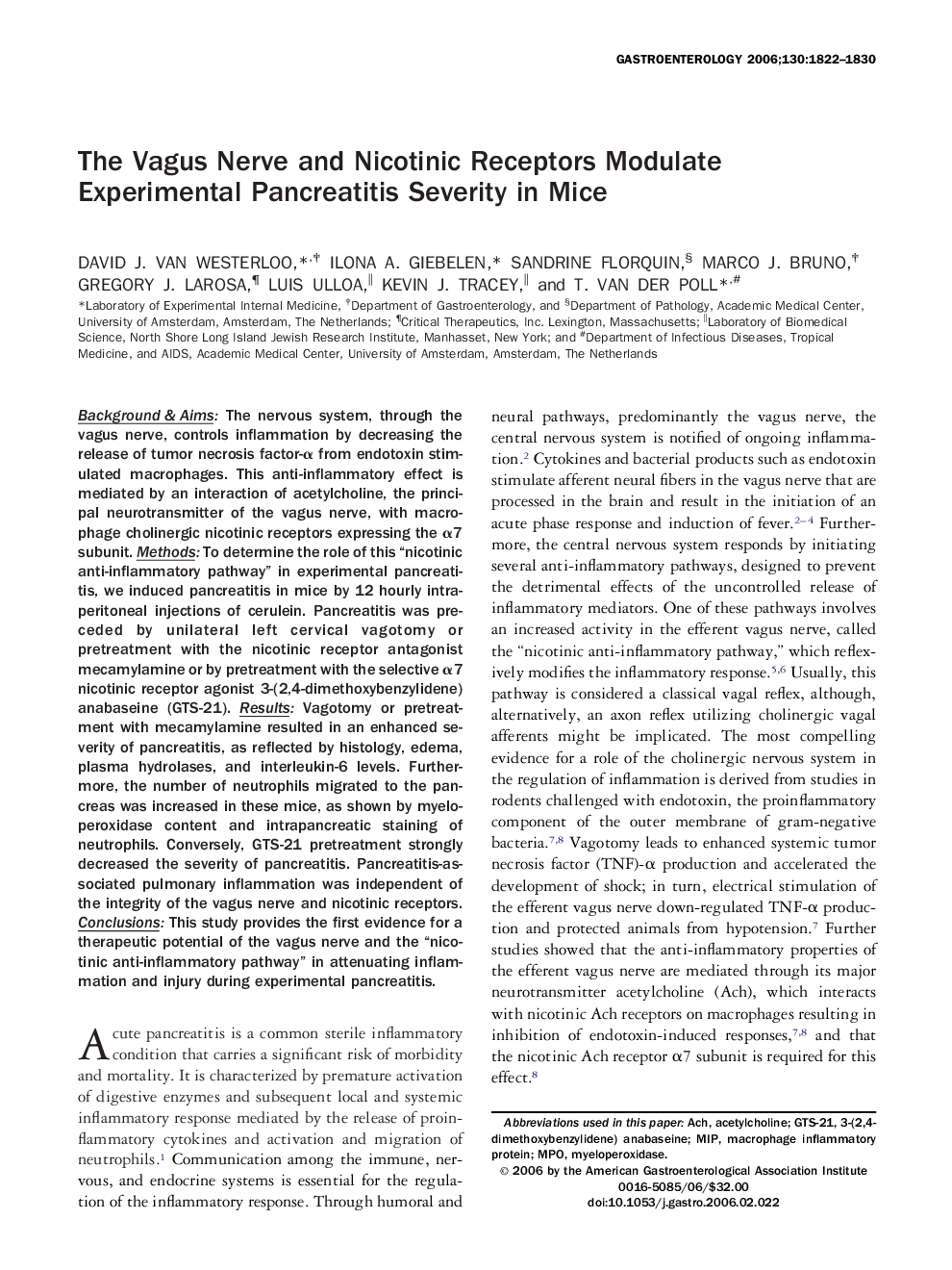| Article ID | Journal | Published Year | Pages | File Type |
|---|---|---|---|---|
| 3297636 | Gastroenterology | 2006 | 9 Pages |
Background & Aims: The nervous system, through the vagus nerve, controls inflammation by decreasing the release of tumor necrosis factor-α from endotoxin stimulated macrophages. This anti-inflammatory effect is mediated by an interaction of acetylcholine, the principal neurotransmitter of the vagus nerve, with macrophage cholinergic nicotinic receptors expressing the α7 subunit. Methods: To determine the role of this “nicotinic anti-inflammatory pathway” in experimental pancreatitis, we induced pancreatitis in mice by 12 hourly intraperitoneal injections of cerulein. Pancreatitis was preceded by unilateral left cervical vagotomy or pretreatment with the nicotinic receptor antagonist mecamylamine or by pretreatment with the selective α7 nicotinic receptor agonist 3-(2,4-dimethoxybenzylidene) anabaseine (GTS-21). Results: Vagotomy or pretreatment with mecamylamine resulted in an enhanced severity of pancreatitis, as reflected by histology, edema, plasma hydrolases, and interleukin-6 levels. Furthermore, the number of neutrophils migrated to the pancreas was increased in these mice, as shown by myeloperoxidase content and intrapancreatic staining of neutrophils. Conversely, GTS-21 pretreatment strongly decreased the severity of pancreatitis. Pancreatitis-associated pulmonary inflammation was independent of the integrity of the vagus nerve and nicotinic receptors. Conclusions: This study provides the first evidence for a therapeutic potential of the vagus nerve and the “nicotinic anti-inflammatory pathway” in attenuating inflammation and injury during experimental pancreatitis.
